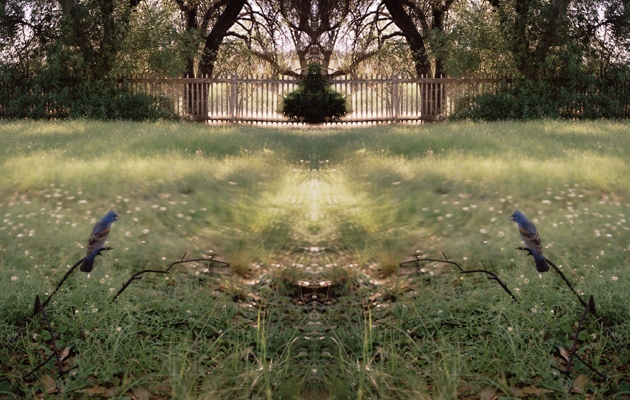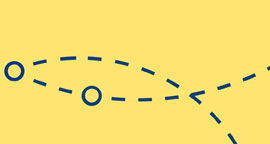Centre for Contemporary Culture at Palazzo Strozzi
Palazzo Strozzi
Jean-Luc Mylayne

N. 407, April May 2006
2006
C-Print
153 x 300 cm
Courtesy the artist, Sprüth Magers Berlin London
© Jean-Luc Mylayne
Warning: A non-numeric value encountered in /var/www/vhosts/strozzina.org/httpdocs/admin/wp-content/plugins/lightbox-gallery/lightbox-gallery.php on line 443
- Jean-Luc Mylayne, N. 520, Fevrier Mars Avril 2007, C-Print, 183 x 228 cm. Courtesy the artist, Sprüth Magers Berlin London. © Jean-Luc Mylayne
- Jean-Luc Mylayne, N. 428, Novembre Decembre 2007, 2007. C-Print, 123 x 153 cm. Courtesy the artist, Sprüth Magers Berlin London and Gladstone Gallery, NY, Brussels. © Jean-Luc Mylayne
- Jean-Luc Mylayne, N. 407, April May 2006, 2006. C-Print, 153 x 300 cm. Courtesy the artist, Sprüth Magers Berlin London. © Jean-Luc Mylayne
JEAN-LUC MYLAYNE
The works of Jean-Luc Mylayne spring from an encounter with his subjects, developing a conscious and elaborate reflection down to the last detail. The images are the result of long periods during which the artist, together with his wife and assistant Mylène, travels to places where, almost like an ornithologist, he meticulously studies the habits and behavior of the indigenous species of birds. Allowing months to elapse before taking a single shot, Mylayne enters into an intense relationship with the environment in which he decides to work, until eventually he is able to predict its rhythms, its dynamics and its transformations over time.
The apparent spontaneity of his photographs is contradicted by the extreme control of the composition. On the one hand a search for the beauty of a ephemeral moment, on the other a profound awareness of the construction of the image. Each tiny detail is the fruit of a precise intention: the position and behavior of the birds, the clouds in the sky, the light of the sun. Through his manipulation of the lenses, the artist explores a multitude of focusing possibilities within the same frame, thus proposing an allegory of the human capacity to think, perceive and comprehend different dimensions, times and spaces. Our eye is unable to focus simultaneously on a number of details but, through abstract reasoning, we are able to see and understand the reality in front of us in its complexity and in the diversity of time and space. This is what happens, for example, in work N° 295, Mars Avril 2005, where on the one hand we observe the fleeting moment of the pose of a bird and the movement of a cloud, yet on the other we get a sense of the eternity and immobility of the mountains in the background. For Mylayne, the difference between the animal and the human world is not in language (even animals have a language), but in what he calls “the design”, the cognitive capacity for abstraction, the faculty of being able to project an idea of something that does not exist in nature.
The intellectual construction of Mylayne’s works is made manifest in the great number of philosophical and art historical references found in his photographs. Mylayne uses classical criteria in pictorial composition and frequently resorts to compositional methods that include symmetrical constructions, mirroring effects and the use of traditional formats like the diptych or triptych. In works like N°520, Février – Mars – Avril 2007, the branches of the tree in the lower part of the image seem to suggest an almost calligraphical aesthetic that stands out against the monochromatic blue sky background, reminiscent of Piero della Francesca or cycles of medieval frescoes. The polyptych N° 428, 429, 430, 431, 432, Novembre – Décembre 2007 testifies instead to an aesthetic ideal that plays with the symbology of light and shadow, presence and absence, beauty and death. The documentation of various moments of activity of a pair of birds is combined with a sense of the sacred produced by the light and by the diagonal composition of the images.
The beauty in Mylayne’s works lies not only in the harmonious poetry of his images but also in the whole-hearted, patient and total devotion of the photographer to the encounter with the other, represented by birds. What distinguishes his work is the humility and respect he shows towards his subjects. An “antimodern” attitude in his search for a beauty that is not only formal or conceptual, but also profoundly ethical. The essence of beauty becomes a life practice, in an existential sphere that is the fruit of a reflection on how to exist in the world, considering one’s own finiteness.
Jean-Luc Mylayne (1946; lives and works throughout the world) brings a meticulous and erudite study of nature and its rhythms to his photographic work focusing on birds, coupled with an expert construction of points of view and a skilled use of focus. With a background in philosophy, he creates photographs that become a meditation on the notion of time and the relationship between man and nature, prompting us to reflect on the eye’s ability not only to discover beauty but also to build it. His most recent solo exhibitions include: (2012) Jean-Luc Mylayne, Sprüth Magers, Berlin; (2011) Jean-Luc Mylayne, Gladstone Gallery, New York; (2011) The Heavens Are Blue, Nevada Museum of Art, Reno; (2010) Sky Traces in the Hands of Time, Museo Nacional Centro de Arte Reina Sofia, Madrid; (2010) To Go Very Softly: Photographs by Jean-Luc Mylayne, Lannan Foundation, Santa Fe, New Mexico; (2009) Jean-Luc Mylayne, Musée d’art contemporain, Lyon. In 2011, he appeared in the 54th Biennale di Venezia, ILLUMInations, and his work has been included recently in the following collective exhibitions: (2009) Dans l’œil du critique, Bernard Lamarche-Vadel et les artistes, Musée d’Art Moderne de la Ville de Paris, Paris; (2009) Then the Work Takes Place on the Paradigm of the Conceptual in Contemporary Photography, Kunsthaus Graz, Austria; (2008) Out of Time, Neues Museum Weserburg, Bremen, Germany.
« back to exhibition
| M | T | W | T | F | S | S |
|---|---|---|---|---|---|---|
| « Jun | ||||||
| 1 | 2 | 3 | 4 | 5 | 6 | 7 |
| 8 | 9 | 10 | 11 | 12 | 13 | 14 |
| 15 | 16 | 17 | 18 | 19 | 20 | 21 |
| 22 | 23 | 24 | 25 | 26 | 27 | 28 |
| 29 | 30 | 31 | ||||















